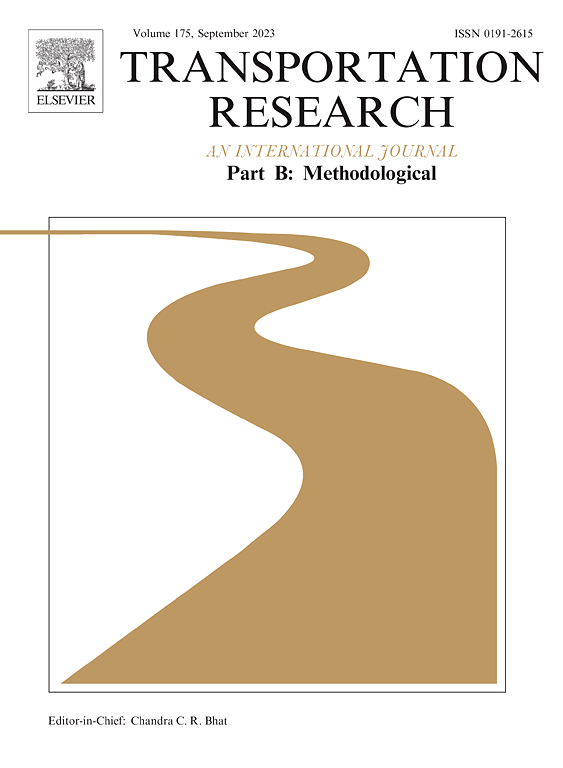随机交通网络中 CV 联合自适应路由的马尔可夫博弈:可扩展的学习方法
IF 5.8
1区 工程技术
Q1 ECONOMICS
引用次数: 0
摘要
本研究提出了一种基于学习的方法,以应对在有互联车辆(CV)的随机交通网络中联合自适应路由选择的挑战。我们引入马尔可夫路由博弈(MRG)来模拟此类网络中所有车辆的自适应路由行为,从而将竞争性路由选择和实时决策结合起来。我们在 MRG 中建立了纳什策略(即最优联合自适应路由策略),使车辆能够通过高效通信在线优化适应实时交通状况。为了增强可扩展性,我们创新了一种基于同质性的均场逼近方法,并在此基础上进一步开发了基于同质性的均场深度强化学习(HMF-DRL)算法,以学习 MRG 中的纳什策略。通过对 Nguyen-Dupuis 网络的数值实验,我们证明了我们的算法能够高效收敛和学习联合自适应路由策略,从而显著提高交通网络效率。此外,我们的研究还深入探讨了出行需求、CV 渗透率和不确定性水平对联合自适应路由策略性能的影响。本文提出了在不确定交通条件下提高网络效率和减少大多数车辆旅行时间的重要措施。本文章由计算机程序翻译,如有差异,请以英文原文为准。
Markov game for CV joint adaptive routing in stochastic traffic networks: A scalable learning approach
This study proposes a learning-based approach to tackle the challenge of joint adaptive routing in stochastic traffic networks with Connected Vehicles (CVs). We introduce a Markov Routing Game (MRG) to model the adaptive routing behavior of all vehicles in such networks, thereby incorporating both competitive route choices and real-time decision-making. We establish the existence of the Nash policy (i.e., optimal joint adaptive routing policy) within the MRG that enables vehicles to adapt optimally to real-time traffic conditions online through efficient communication. To enhance scalability, we innovate with a homogeneity-based mean-field approximation method and, based on that, further develop the Homogeneity-based Mean-Field Deep Reinforcement Learning (HMF-DRL) algorithm to learn the Nash policy within the MRG. Through numerical experiments on the Nguyen–Dupuis network, we demonstrate our algorithm’s ability to efficiently converge and learn the joint adaptive routing policy that significantly enhances traffic network efficiency. Furthermore, our study provides insights into the effects of travel demand, penetration of CVs, and levels of uncertainty on the performance of the joint adaptive routing policy. This paper presents a significant step towards improving network efficiency and reducing the travel time for a majority of vehicles amid uncertain traffic conditions.
求助全文
通过发布文献求助,成功后即可免费获取论文全文。
去求助
来源期刊
CiteScore
12.40
自引率
8.80%
发文量
143
审稿时长
14.1 weeks
期刊介绍:
Transportation Research: Part B publishes papers on all methodological aspects of the subject, particularly those that require mathematical analysis. The general theme of the journal is the development and solution of problems that are adequately motivated to deal with important aspects of the design and/or analysis of transportation systems. Areas covered include: traffic flow; design and analysis of transportation networks; control and scheduling; optimization; queuing theory; logistics; supply chains; development and application of statistical, econometric and mathematical models to address transportation problems; cost models; pricing and/or investment; traveler or shipper behavior; cost-benefit methodologies.

 求助内容:
求助内容: 应助结果提醒方式:
应助结果提醒方式:


